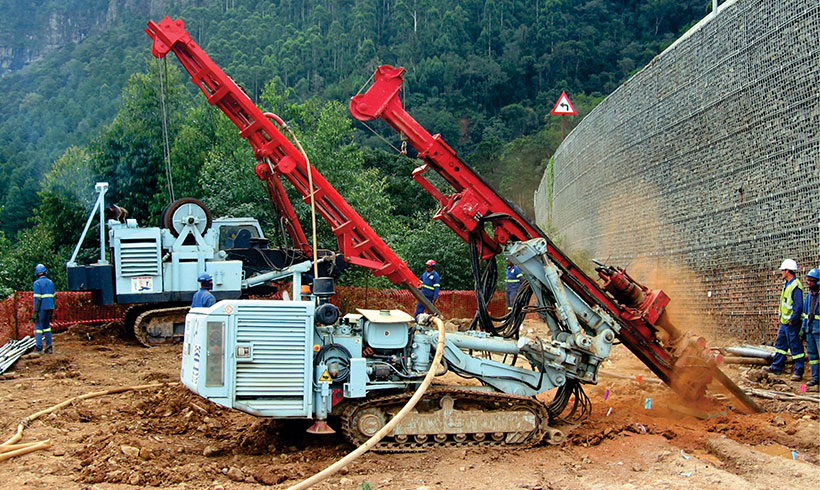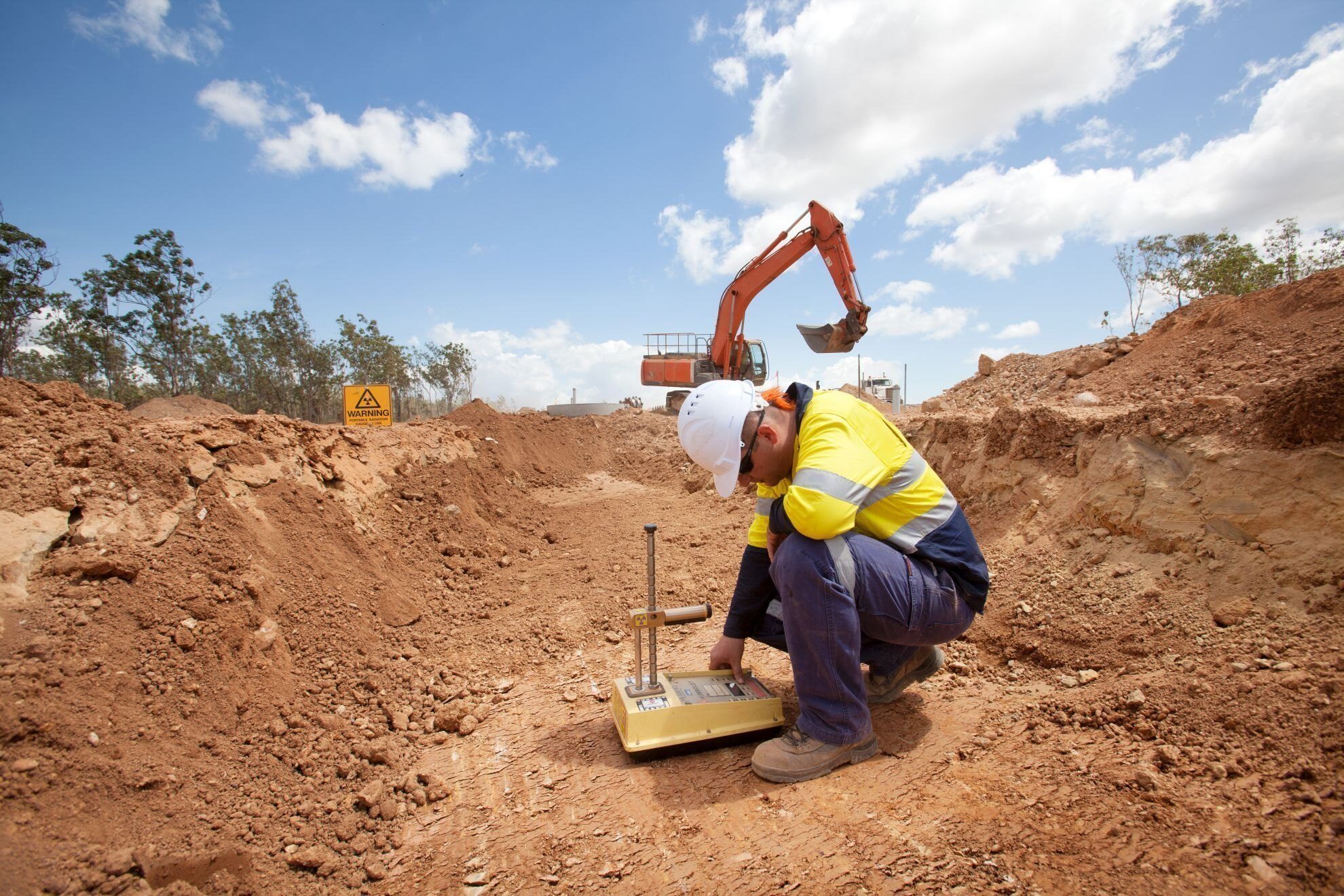The 4-Minute Rule for Specialized Geotechnical Engineering Solutions
The 4-Minute Rule for Specialized Geotechnical Engineering Solutions
Blog Article
9 Easy Facts About Specialized Geotechnical Engineering Solutions Shown
Table of ContentsTop Guidelines Of Specialized Geotechnical Engineering SolutionsOur Specialized Geotechnical Engineering Solutions StatementsSpecialized Geotechnical Engineering Solutions Fundamentals ExplainedGetting The Specialized Geotechnical Engineering Solutions To Work
They perform site investigations, collect examples, execute research laboratory examinations, and examine information to examine the viability of the ground for construction tasks. Based upon their searchings for, geotechnical engineers offer referrals for foundation design, slope security, keeping frameworks, and mitigation of geotechnical threats. They team up with various other experts, such as designers, structural designers, and building groups, to guarantee that geotechnical considerations are integrated into the overall task design and implementation.
Structure Style: Geotechnical engineers play a critical function in creating structures that can securely sustain the desired structure. They evaluate the soil problems and tons requirements to identify the ideal structure type, such as superficial structures (e.g., footings), deep foundations (e.g., piles), or specialized methods like dirt renovation. They think about aspects such as negotiation limits, bearing ability, and soil-structure communication to create optimum foundation styles.
The Best Guide To Specialized Geotechnical Engineering Solutions
Here are some sorts of geotechnical engineers: Foundation Designer: Structure designers concentrate on making and examining structures for frameworks - Specialized Geotechnical Engineering Solutions. They evaluate the soil conditions, lots demands, and site features to identify the most appropriate foundation type and design, such as shallow foundations, deep structures, or specialized techniques like stack foundations
They do area screening, accumulate samples, and evaluate the collected data to define the soil residential or commercial properties, geologic formations, and groundwater problems at a website. Geotechnical Instrumentation Engineer: Geotechnical instrumentation designers concentrate on surveillance and gauging the actions of dirt, rock, and frameworks. They mount and keep instrumentation systems that keep track of factors such as soil settlement, groundwater degrees, incline activities, and structural displacements to examine performance and provide early warnings of prospective concerns.
In the office setting, geotechnical designers use specialized software tools to carry out computations, create designs, and assess data. Specialized Geotechnical Engineering Solutions. They prepare reports, evaluation project specifications, interact with clients and group participants, and coordinate job tasks. The workplace setup offers a conducive environment for study, analysis, and collaboration with other specialists entailed in the job
They regularly see job sites to carry out site examinations, assess geotechnical problems, and collect data for analysis. These visits include traveling to various locations, sometimes in remote or tough surfaces. Geotechnical designers may do dirt tasting, conduct tests, and screen building tasks to make sure that the geotechnical facets of the task are being applied correctly.
The Main Principles Of Specialized Geotechnical Engineering Solutions
Geotechnical designers additionally function in specialized geotechnical laboratories. Geotechnical research laboratory designers function thoroughly in these atmospheres, taking care of screening tools, operating tools, and videotaping data.
Maintaining Wall surfaces: Producing wall surfaces that keep back soil to protect against landslides and offer stability on sloped surfaces. Embankments and Earthworks: Creating embankments for roads, railways, and dams to ensure they stay stable under tension. The mining market depends heavily on geotechnical design to ensure the security and longevity of its procedures.
With this in mind, we have actually made our program to prepare trainees for success. The Geotechnical Engineering program at the University of Delaware uses chances for sophisticated research study and study in: Dirt and rock technicians Soil-structure interaction Constitutive modeling Computational geomechanics Foundation and planet structures engineering Ground renovation Slope security and landslide stabilization Liquefaction of dirts and earthquake design Research laboratory characterization of geomaterials and dirt support Ecological geotechnics Offered the solid need for renovation to our country's infrastructurethe American Society of Civil Designers provided the united state
Geotechnical design is a branch of civil engineering; nonetheless, it involves utilizing scientific approaches and concepts to gather and translate the physical properties of the ground. official site Geotechnical engineers are involved in all phases of the style of frameworks, from concept to building. Their work is crucial in the style and planning process as they analyze the integrity of dirt, clay, silt, sand, and rock, before building beginning.
The 10-Minute Rule for Specialized Geotechnical Engineering Solutions
This is followed by a ground investigation based on the searchings for of the workdesk study and entails trial pitting and tasting to discover any type of possible problems. Geotechnical designers work within multidisciplinary teams, sustained by intermediate and jr designers in addition to by CAD professionals. As an elderly geotechnical engineer on a hydro plant job, tasks may consist of getting involved in technological testimonials (e.g., peer evaluations), tailings dam evaluations, dam safety and security testimonials, and other research studies connected to the layout and building and construction of mine waste facilities.
While some professionals are experts solely in see post geotechnics, others may work under titles like engineering rock hound or ground engineer within similar capacities. As a geotechnical designer, you'll need to: construct and maintain partnerships with clients and various other experts included in the website, throughout each projectmaintain safety standards on site bear in mind expense ramifications when you make recommendationsstudy geological maps and airborne photos from a variety of sources and from different time periodsexamine construction intends to see how possible they are based on your understanding of the siteinvestigate dangers or geological risks for the sitesearch for ecologically sensitive features, such as land fill beginning to create accurate and interpretive ground modelsplan field investigationsdrill and evaluate samples of bedrock, soil, groundwater and additional products supervise other experts on sitesolve technical problems as they develop, such as unexpected structures at drill sitesmonitor problems during and after building and construction to make sure frameworks are steady in the short and lengthy termadd data accumulated on my link site to your preliminary researchcreate geotechnical calculations, illustrations, and 2 or three-dimensional computer versions analyzing the datamake referrals about the recommended usage of the site.
There are great deals of chances to fulfill new individuals, as you'll collaborate with an array of specialists at every website. The job can be stressful as you might be in charge of the safety of others while on site. There is additionally a high level of financial obligation, as the recommendations you make can have severe expense implications.

Report this page